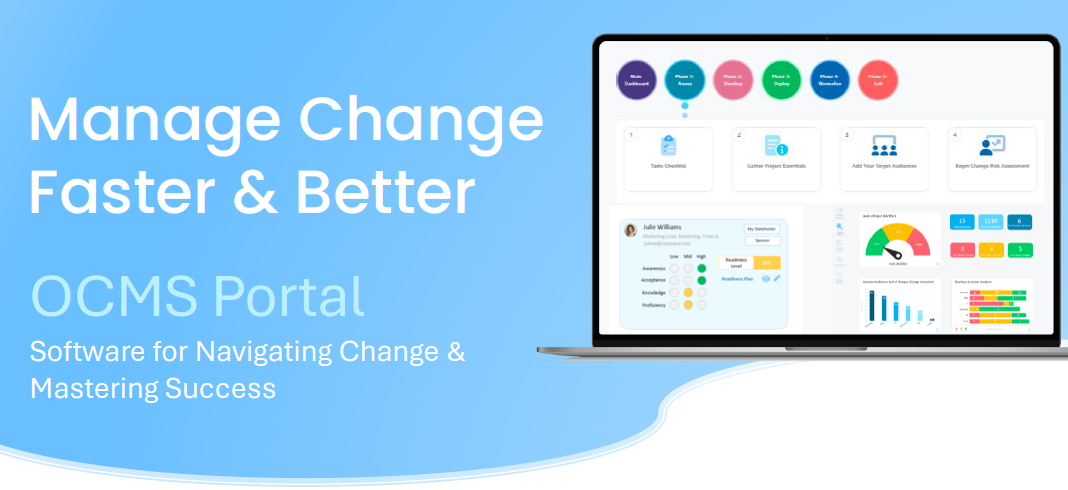Important Activities Contributing to Effective Change Management
Change management is key to a smooth change initiative. It’s not just about steps and procedures; it’s about coordinating activities that resonate throughout the organization. From designing change management processes activities to interactive workshops, every part is crucial in aligning the project’s goals with the team’s needs.
The core of this is the change management process, providing a structured way to handle the people side of change. These activities ensure changes are smoothly implemented and their benefits last. Change management workshop activities act as a bridge, connecting impacted groups and fostering learning and adaptation. Leadership activities then guide the organization through the transition with clear vision and support.

These activities in change management work together to make projects successful and ensure everyone benefits. It’s the secret sauce that helps companies navigate change and come out stronger on the other side.
Watch a summary below:
Story Highlights
|
Understanding Change Management
Organizational Change Management (OCM) is a structured approach to transitioning individuals, teams, and organizations from a current state to a desired future state. It involves preparing, supporting, and helping individuals to adopt change, thereby driving organizational success and outcomes. Effective change management activities are the backbone of any successful change initiative.
Key Activities Contributing to Effective Change Management
First, we’re going to discuss activities of change management process. These are activities vital for the change management team’s deliverables. These change management process activities are typically standard across many different types of change initiatives.
Stakeholder Analysis and Impact Assessment
One of the first steps in any change management initiative is identifying and understanding the stakeholders affected by the change, and how the changes are impacting groups across the organization.
Change impact assessment looks at the severity and number of changes impacting each group. Stakeholder analysis involves mapping out who will be impacted, their level of influence, and their potential reactions. This analysis helps in crafting tailored communication strategies and engagement plans.
Organizational Change Activities Involved:
- Identifying Stakeholders: List all individuals and groups affected by the change.
- Assessing Impact: Determine how the change will impact each stakeholder.
- Engagement Planning: Develop strategies to engage stakeholders, address their concerns, and involve them in the change process.
Communication Planning
Effective communication is vital in change management. A well-developed OCM communication plan ensures that all stakeholders are informed, engaged, and aligned with the change objectives. Communication should be clear, consistent, and continuous throughout the change process.
Organizational Change Management Activities Involved:
- Crafting Messages: Develop key messages that explain the change, its benefits, and its impact.
- Selecting Channels: Choose the most effective communication channels for different stakeholder groups.
- Scheduling Updates: Plan regular updates to keep stakeholders informed and engaged.
Training and Development
For change to be successful, employees need the necessary skills and knowledge to adapt to new processes, systems, or behaviors. Training and development activities are crucial to equip employees with these capabilities.
Activities in Change Management Involved:
- Training Needs Assessment: Identify the skills and knowledge gaps that need to be addressed.
- Developing Training Programs: Create training materials and programs tailored to the needs of different groups.
- Delivering Training: Implement training sessions, workshops, and e-learning modules to ensure employees are well-prepared for the change.
Resistance Management
Resistance to change is natural and should be anticipated. Change management teams must identify potential sources of resistance and develop strategies to address them. Managing resistance effectively is key to ensuring smooth transitions.
Change Management Activities Involved:
- Identifying Resistance: Recognize early signs of resistance through feedback and observation.
- Addressing Concerns: Engage with resistant individuals or groups to understand their concerns and address them.
- Providing Support: Offer additional support, such as coaching or counseling, to help individuals overcome their resistance.
Monitoring and Feedback
Continuous monitoring and feedback are essential to track the progress of the change initiative and make necessary adjustments. This ensures that the change is on track and achieving its intended outcomes.
Organizational Change Activities Involved:
- Progress Tracking: Use change metrics and KPIs to monitor the progress of the change initiative.
- Gathering Feedback: Collect feedback from stakeholders through surveys, interviews, and focus groups.
- Adjusting Plans: Make adjustments to the change plan based on feedback and performance data.
Please let us know if you have any questions about these process activities in change management. We’ll be happy to help!
Change Management Workshop Activities
Workshops are an effective way to engage stakeholders, address concerns, and build commitment to the change. Here are some fun change management activities conducted in change management workshops.
Visioning Exercises
Visioning exercises help participants understand and align with the change vision. These activities contributing to effective change management encourage stakeholders to visualize the future state and their role in it.
Leading Change Activities Involved:
- Future State Mapping: Participants create a visual representation of the desired future state.
- Role Play: Participants act out scenarios to better understand their future roles and responsibilities.
- Vision Statement Creation: Develop a shared vision statement that articulates the collective aspirations for the future.
Problem-Solving Sessions
Problem-solving sessions address specific challenges and barriers to change. These activities foster collaboration and innovation, helping stakeholders find creative solutions to potential issues.
Change Management Activities Examples Involved:
- Brainstorming: Generate a list of potential challenges and possible solutions.
- Root Cause Analysis: Identify the underlying causes of challenges and develop strategies to address them.
- Action Planning: Create detailed action plans to implement solutions and overcome barriers.
Role Clarification Activities
Role clarification activities ensure that all stakeholders understand their roles and responsibilities during the change process. Clear role definitions prevent confusion and promote accountability.
Organizational Change Management Activities Involved:
- Role Mapping: Define and document the roles and responsibilities of each stakeholder.
- Job Shadowing: Allow participants to shadow others to gain a better understanding of different roles.
- Role Play: Conduct role-playing exercises to practice new roles and responsibilities.
Team-Building Exercises
Team-building exercises enhance collaboration and trust among stakeholders. These fun change management activities create a sense of unity and collective responsibility, which is essential for successful change implementation.
Activities in Change Management Involved:
- Icebreakers: Conduct icebreaker activities to help participants get to know each other.
- Trust-Building Exercises: Engage in activities that build trust and strengthen team cohesion.
- Collaborative Projects: Work on joint projects that require teamwork and cooperation.
If you have any questions or feedback about these change management workshop activities, just let us know. We’d love to hear from you!
Change Management Activities for Leaders
Leaders play a crucial role in driving and sustaining change. They must model the desired behaviors, provide guidance, and support their teams throughout the change process. Here are some key change management activities for leaders:
Leading by Example
Leaders must model the behaviors and attitudes they expect from their teams. By demonstrating commitment to the change, leaders inspire others to follow suit.
Leading Change Activities Involved:
- Adopting New Behaviors: Leaders should be the first to adopt new processes, technologies, or behaviors.
- Communicating Positively: Maintain a positive and supportive attitude when communicating about the change.
- Engaging Actively: Participate actively in change-related activities and initiatives.
Providing Clear Direction
Clear and consistent direction from leaders is essential for successful change. Leaders must articulate the vision, goals, and benefits of the change clearly.
Change Management Activities Examples Involved:
- Setting Goals: Define clear and achievable goals for the change initiative.
- Communicating Vision: Regularly communicate the change vision and objectives to all stakeholders.
- Aligning Objectives: Ensure that individual and team objectives align with the overall change goals.
Supporting Teams
Leaders must provide the necessary support and resources to their teams during the change process. This includes addressing concerns, removing obstacles, and providing encouragement.
Activities in Change Management Involved:
- Listening Actively: Listen to team members’ concerns and feedback.
- Providing Resources: Ensure that teams have the resources and tools they need to succeed.
- Offering Encouragement: Recognize and celebrate successes, and provide encouragement during challenging times.
Conclusion: Activities Contributing to Effective Change Management
Change management activities are the secret sauce to successful transitions. By engaging stakeholders, communicating effectively, providing training, managing resistance, and monitoring progress, change management teams can ensure that organizational changes are implemented smoothly and embraced by all.
Incorporating structured activities of change management process into your organization’s transition roadmap will not only facilitate smoother changes but also build a resilient and adaptable workforce ready to tackle future challenges.
Simple, Effective Enterprise Change Management Software
Do you need a single place to manage all these change management activities examples? Look no further than OCMS Portal. Our all-in-one change management platform can handle all the vital activities in change management.
Enjoy automated change management plans, an easy-to-use interface, insightful reporting dashboards, and much more.
Get Your free no-risk trial now.
FAQ: Change Management Activities Examples
What are three main types of change management activities?
Three main types of activities contributing to effective change management include: 1) Change management process activities, 2) Change management workshop activities; and 3) Change management activities for leaders.
What are activities of change management process?
Change management process activities are vital for the change management team’s deliverables. These organizational change activities are typically standard across many different types of change initiatives and include change impact assessment, stakeholder analysis, communications, training, resistance management, and KPI monitoring.
What are some fun change management activities to do in stakeholder workshops?
Some engaging change management workshop activities include icebreakers, trust-building exercises, role play, and collaborative projects.
Note: Content on OCM Solution's ocmsolution.com website is protected by copyright. Should you have any questions or comments regarding this OCM Solutions page, please reach out to Ogbe Airiodion (Change Management Lead) or the OCM Solutions Team today.
External Sources: stock.adobe.com





